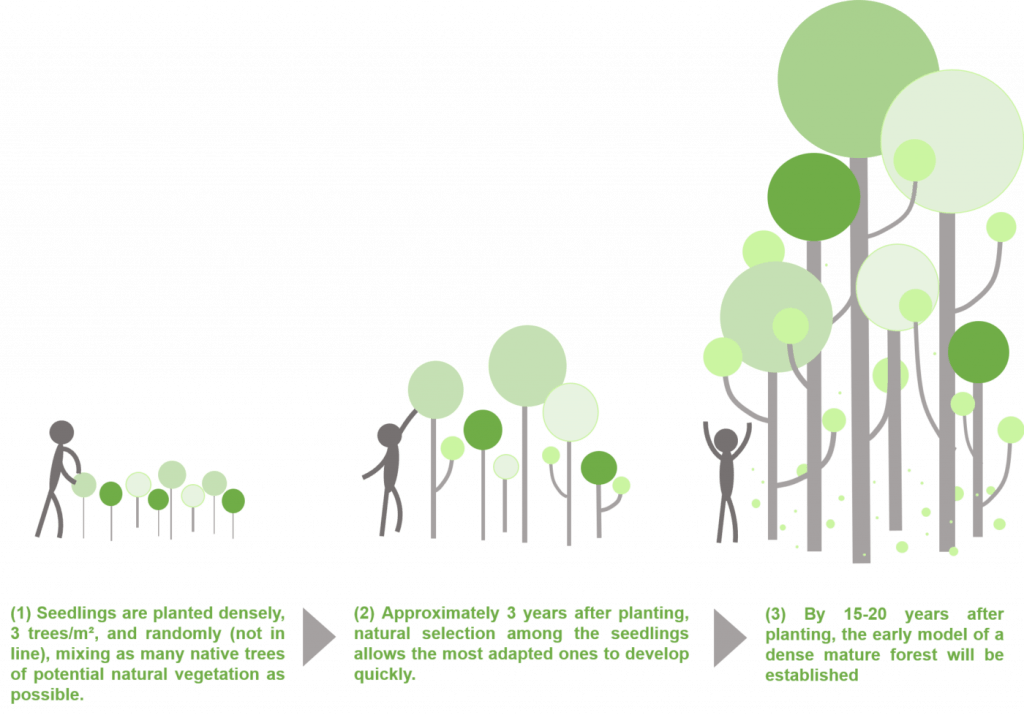complexity, diversity, variety, richness
from Kerala to Devon
.
There are urban forests:
Urban forestry – Vision Group for Sidmouth
Urban Forests uses the Miyawaki method to create urban forests. Miyawaki urban forests are fascinating complex ecosystems, in balance with today’s soil and climate conditions.
Using the methodology, we create native urban forest ecosystems much quicker. The method takes its inspiration directly from processes and diversity in nature: 15 to 30 different species of trees and shrubs are planted together. This plant community works very well together, and is perfectly adapted to local weather conditions.
The habitat thus created will get more complex over time and attract much biodiversity.
Vegetation becomes much denser than conventional plantations, and it has the structure of a mature natural forest. It is a multi-storey structure, where different levels of vegetation appear. The forest thus structured delivers many benefits in the form of ecosystem services.
URBAN FORESTS use the Miyawaki method to create native forests

And there are food forests:
Forest gardening in the West Country – Vision Group for Sidmouth
Perhaps the best known Food Forests, aka Forest Gardens, Edible Forests or Permaculture food Forests, are to be found in the Indian State of Kerala where this form of Agro Forestry is widely practiced. There are apparently several hundred thousand of them and they feed huge numbers of people. Food Forests are also found in Sri Lanka, Zimbabwe, Tanzania, Zambia and Mexico. The common factor here being that they are all warm climates. However, Nepal and Alaska are colder areas and both are areas known for their food forests…
In the West Country the grazing of sheep and even cattle in orchards goes back centuries as does woodland grazing by cattle and pigs. My own family also practiced food farming in the 1930s and beyond. My grandfather had a five acre orchard in devon that was primarily used to produce cider apples but had multiple extra crops within it. Planted amongst the cider apple trees we’re eating and dessert apples, plums, cherries, damsons etc . Under the trees daffodils had been planted and these made a good cut flower crop for bartering at the local grocer shop (if you can’t grow tea then barter something for it). Plenty of grass was grown between the trees and this fed sheep at certain times of year. Pigs in the pig pens, next to the apple store, were free to scrump left over apples after the cider apples were collected. And chicken had free range during the day, close to the hen house. The hedges consisted of hazel for nuts and coppicing, blackberries, sloes, wild roses for hips and a wide range of wild plants that could be eaten.
Food Forests, Forest Gardens Or Edible Forest Gardens – Bite Sized Gardening
And there is agroforestry:
Agroforestry: farming in 3D – Vision Group for Sidmouth
Agroforestry: growing not planting trees is the key – Vision Group for Sidmouth
Silvopasture – Vision Group for Sidmouth
How farming and forestry could happily co-exist – Vision Group for Sidmouth